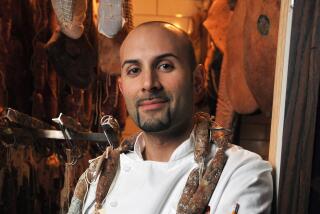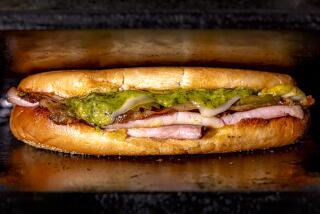Who’s who in the dining room
Here are the key positions you’ll find at most upscale restaurants. The more formal the restaurant, the more people you can expect to see milling about the dining room. The terms may vary by restaurant.
Host or hostess: Greets guests and, depending on the restaurant, may also take reservations. The host usually handles walk-ins and helps with seating at the bar and with taking items to coat check.
General manager (G.M.): The G.M. oversees all restaurant operations that don’t fall under the executive chef’s purview -- from budget to staffing and service issues. Generally, the G.M. works in an office, but he or she can often be seen pinch-hitting in the dining room.
Maître d’: From the French maître d’hôtel (“master of the house”). The maître d’ oversees the seating chart, making sure VIPs get the best servers and choice tables. He greets guests upon arrival (sometimes getting a monied handshake) and ensures smooth table flow. If a table lingers too long, for example, it’s the maître d’s job to tactfully offer those guests a drink at the bar. Depending on the size of the restaurant, the maître d’ sometimes doubles as floor manager.
Floor manager: A catch-all position overseeing the dining room and perhaps fulfilling the duties of a maître d’ or captain at restaurants that don’t have them.
Captain: Oversees several tables in a section of the restaurant and has a team of staffers (front waiters, runners, back waiters, bus people) at his disposal. He stays in the dining room, making sure everyone in his section is having a smooth dining experience. He greets the table; takes appetizer, entrée, dessert and coffee orders; and “drops” the check. He is also in charge of pacing the meal so that entrees don’t arrive when you’re halfway through your starter. At restaurants with table-side service, the captain is responsible for flourishes such as filleting fish or carving fowl. The position exists in the most formal New York restaurants (Per Se, Daniel and Le Bernadin); Spago, Patina and Osteria Mozza don’t use them, but Providence and Craft L.A. do.
Waiter: Fulfills the same function as the captain in less formal restaurants, minus the oversight of other tables, which is left to a floor manager.
Front waiter: The liaison between the kitchen and the waiter, he also assists the waiter or captain with wine and beverage service and helps “mark” or set the table before each course.
Sommelier or wine director: Assists guests with food and wine pairings, tactfully gauging what the guests will want to spend. He also typically purchases wine for the restaurant, arranges staff tastings and assembles the wine list.
Maître fromager: If the restaurant has a substantial cheese selection, chances are it also has a master of cheese. He presents cheeses at the table and serves them, making suggestions when appropriate about wine pairings. He also cares for the cheeses, keeping them at the right temperature and aiming for peak ripeness. There are only a handful in L.A., at restaurants such as Patina, Comme Ça and Spago.
Runner: Responsible for bringing dishes from the kitchen to the table. Using table positions (provided by the waiter), the runner drops dishes in front of the appropriate guests.
Back waiter/bus person: Responsible for “table maintenance”: refilling water glasses and coffee cups, clearing finished dishes, crumbing the table.
-- Pascale Le Draoulec
More to Read
Sign up for our L.A. Times Plants newsletter
At the start of each month, get a roundup of upcoming plant-related activities and events in Southern California, along with links to tips and articles you may have missed.
You may occasionally receive promotional content from the Los Angeles Times.






